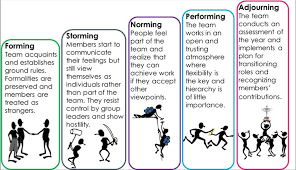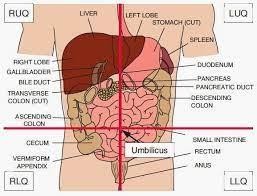ATI Nursing 100 day Exam 4 (Fundamentals)
Total Questions : 59
Showing 25 questions, Sign in for moreThe nurse recognizes that the most appropriate reason to suction a client is that:
Explanation
Choice A rationale: Suctioning is not typically performed as part of routine pulmonary nursing care every eight hours. It is indicated based on the client's clinical need.
Choice B rationale: Suctioning frequency should be determined by the client's condition and physician's orders, not a fixed hourly schedule.
Choice C rationale: Routine coughing and swallowing of sputum do not necessarily warrant suctioning. Suctioning is indicated when the client is unable to manage secretions effectively.
Choice D rationale: Suctioning is appropriate when the client has gurgling respirations and is unable to cough effectively, indicating the need to clear the airway.
A group that has transformed itself from a collection of individuals into a productive, problem-solving highly functioning team would be functioning in which stage of group development?
Explanation
Choice A rationale: Norming is characterized by the development of group cohesion and establishment of norms, not necessarily high-level problem-solving.
Choice B rationale: Storming is marked by conflict and tension within the group, not optimal problem-solving.
Choice C rationale: Forming is the initial stage where members get to know each other; it does not represent a highly functioning team.
Choice D rationale: Performing is the stage where the group is functioning at its highest level, demonstrating effective problem-solving and productivity.

The nurse is aware that a common cause of under delegation in client care is:
Explanation
Choice A rationale: Under-delegation is not related to giving too much responsibility to assistive personnel; it is about appropriate delegation based on the nurse's assessment of the situation.
Choice B rationale: Trust in delegates is essential, and under-delegation is more likely related to a lack of trust or confidence in delegation.
Choice C rationale: Under-delegation can occur due to a nurse's need for perfectionism and control, leading to a reluctance to delegate tasks to others.
Choice D rationale: Nurses often have heavy workloads, and under-delegation may be a result of feeling there is not enough time to delegate effectively.
A nurse is caring for a client being treated for hypernatremia. Which of the following are appropriate nursing interventions? (SELECT ALL THAT APPLY)
Explanation
Choice A rationale: Hypernatremia involves elevated sodium levels, so encouraging potassium-rich foods is not directly related to addressing hypernatremia.
Choice B rationale: Restricting sodium in the diet is appropriate to help manage and reduce hypernatremia. This can prevent further complications of hypernatremia, such as dehydration, confusion, seizures, and coma.
Choice C rationale: This is not an appropriate intervention for hypernatremia, as water intake can help dilute the sodium levels and restore the fluid balance in the body.
Decreasing water intake can worsen the hypernatremia and cause dehydration. Choice D rationale: This is an appropriate intervention for hypernatremia, as high sodium levels can affect the fluid balance and blood pressure in the body. Monitoring
vital signs can help detect any changes or abnormalities that may indicate worsening of the condition or need for further treatment.
Choice E rationale: Monitoring intake and output helps assess fluid balance and response to interventions for hypernatremia.
The nurse has applied a topical agent to the client's skin, and then applies an ice pack to the area. This is done to:
Explanation
Choice A rationale: Applying an ice pack after a topical agent is not primarily for decreasing discomfort but rather to achieve a specific therapeutic effect.
Choice B rationale: Applying an ice pack can slow the absorption of the topical drug, allowing for prolonged local action.
Choice C rationale: Enhancing drug excretion is not typically achieved by applying an ice pack.
Choice D rationale: Maximizing drug distribution is not the primary purpose of applying an ice pack after a topical agent.
A client is admitted to the hospital with a diagnosis of R/O appendicitis. Which abbreviation would describe the location of a client's appendix?
Explanation
Choice A rationale: RLQ (Right Lower Quadrant) is the correct abbreviation for the location of the appendix, which is typically found in the right lower quadrant of the abdomen.
Choice B rationale: RUQ (Right Upper Quadrant) is not the location of the appendix.
Choice C rationale: LUQ (Left Upper Quadrant) is not the location of the appendix.
Choice D rationale: LLQ (Left Lower Quadrant) is not the location of the appendix.

A client must receive eyedrops bilaterally four times a day. The medication should be dropped onto which of the following areas?
Explanation
Choice A rationale: The sclera by the outer canthus is not the typical site for administering eyedrops bilaterally.
Choice B rationale: Dropping medication onto the center of the cornea is not the recommended technique for administering eyedrops.
Choice C rationale: The sclera by the inner canthus is not the usual site for administering eyedrops bilaterally.
Choice D rationale: The lower conjunctival sac is the appropriate area for administering eyedrops, ensuring proper absorption and distribution.
The nurse knows that teaching about the use of the spirometer incentive is effective when the client seals the lips around the mouthpiece and:
Explanation
Choice A rationale: Inhaling slowly to raise the ball to the desired level and attempting to keep the ball raised for several seconds is the correct technique for using an incentive spirometer.
Choice B rationale: Blowing into the mouthpiece with a long slow expiration is not the correct technique for using an incentive spirometer.
Choice C rationale: Beginning breathing with a rapid, forceful inspiration is not the recommended technique for using an incentive spirometer.
Choice D rationale: Exhaling slowly to raise the ball and quickly inhaling is not the correct technique for using an incentive spirometer.

The nurse is administering medications to a client who has severe liver damage. Which medications, as ordered below, will avoid the first pass effect? (SELECT ALL THAT APPLY)
Explanation
Choice A rationale: Acetaminophen 500 mg PO is subject to the first pass effect as it is absorbed through the gastrointestinal system.
Choice B rationale: Dulcolax suppository is not subject to the first pass effect as it is administered rectally.
Choice C rationale: Aspirin 10 mg PO is subject to the first pass effect as it is absorbed through the gastrointestinal system.
Choice D rationale: Fentanyl 25 mcg/h via transdermal patch avoids the first pass effect as it is absorbed through the skin.
Choice E rationale: Morphine 0.4 mg IV avoids the first pass effect as it is administered intravenously.
Which nursing action is most helpful in thinning a client's thick respiratory secretions?
Explanation
Choice A rationale: Maintaining continuous oxygen therapy does not directly address the thinning of respiratory secretions.
Choice B rationale: Maintaining a consistent air temperature in the client's room is not directly related to thinning respiratory secretions.
Choice C rationale: Keeping the client in a supine position as much as possible is not the most helpful action for thinning respiratory secretions.
Choice D rationale: Assisting the client to maintain an adequate fluid intake is the most helpful action in thinning respiratory secretions, promoting hydration and mobilization of secretions.
The nurse recognizes that which is not a necessary feature of a team?
Explanation
Choice A rationale: Shared responsibility is a necessary feature of a team, promoting collaboration and achievement of common goals.
Choice B rationale: Mutual independence allows team members to work together while maintaining individual contributions.
Choice C rationale: Working in the same department is not a necessary feature of a team. Teams can be effective regardless of their physical proximity.
Choice D rationale: Common purpose is essential for a team to work cohesively toward shared goals.
A nurse is caring for a client who has a diagnosis of alcohol withdrawal. Which serum laboratory value validates the client's admitting diagnosis? A serum:
Explanation
Choice A rationale: A serum magnesium level of 1.8 mEq/L is lower than the normal range and can be associated with alcohol withdrawal.
Choice B rationale: Potassium level within the normal range is not specifically indicative of alcohol withdrawal.
Choice C rationale: Calcium level within the normal range is not specifically indicative of alcohol withdrawal.
Choice D rationale: Phosphorus level within the normal range is not specifically indicative of alcohol withdrawal.
On admission to the hospital, the nurse notes that the client has a sacral wound that is "yellow" in color. What wound treatment would the nurse expect the health care provider to order?
Explanation
Choice A rationale: Promotion of oxygenation by enhancing air circulation around the wound is not the primary treatment for a "yellow" wound.
Choice B rationale: Removal of nonviable tissue followed by a moist wound dressing is the expected treatment for a wound with yellow color, indicating the presence of slough (nonviable tissue).
Choice C rationale: Use of barrier cream and a foam dressing may be indicated for other types of wounds but may not address the specific issue of nonviable tissue in a "yellow" wound.
Choice D rationale: No treatment is necessary is not appropriate for a wound with evidence of nonviable tissue.
A client has had an uncomplicated repair of an inguinal hernia. On the second post- operative day, the client has mildly elevated temperature and general malaise. The
Explanation
Choice A rationale: An inflammatory response, including mild fever and malaise, is common during the inflammatory phase of healing, which occurs in the initial postoperative period.
Choice B rationale: Proliferation is the phase of healing characterized by tissue repair and regeneration, not by fever and malaise.
Choice C rationale: Remodeling is the final phase of healing involving tissue maturation and strengthening, not associated with generalized body responses.
Choice D rationale: Infection is a separate complication and may present with more severe symptoms than mild fever and malaise.
In providing care for clients, the nurse knows that the normal stimulus to breathe is a/an:
Explanation
Choice A rationale: The normal stimulus to breathe is an increased carbon dioxide level, which stimulates the respiratory center in the brain.
Choice B rationale: Increased oxygen levels do not serve as the primary stimulus for breathing. The respiratory center is primarily responsive to carbon dioxide levels.
Choice C rationale: Increased carbon dioxide level is the correct stimulus for normal breathing.
Choice D rationale: Decreased oxygen level is not the primary stimulus for normal breathing.
The client asks the nursing student to crush her medications and put them in apple sauce. Even before the student researches the medications, he knows that the tablet he cannot deliver in this manner is:
Explanation
Choice A rationale: Loperamide 2 mg is generally available in liquid form, so crushing is not typically necessary.
Choice B rationale: Diltiazem SR 180 mg (Sustained Release) should not be crushed, as it is formulated for extended release over time.
Choice C rationale: Acetaminophen 325 mg is usually available in liquid form, so crushing may not be necessary.
Choice D rationale: Methyldopa 125 mg is generally available in liquid form, so crushing may not be necessary.
A one-day post-operative client complains of severe abdominal pain and has shallow respirations at 22/minute. The client is reluctant to perform coughing and deep breathing. Based on the data, the priority problem that the nurse could assign to this patient is:
Explanation
Choice A rationale: Ineffective gas exchange is related to respiratory issues but may not be the priority in this case.
Choice B rationale: Ineffective breathing pattern is the priority problem, as evidenced by shallow respirations and reluctance to perform coughing and deep breathing, which can lead to respiratory complications.
Choice C rationale: Activity intolerance is not the priority problem based on the given data.
Choice D rationale: Decreased cardiac function is not the priority problem based on the given data.
The nurse enters a client's room to find that his abdominal wound has eviscerated.
Which intervention should the nurse implement first?
Explanation
Choice A rationale: Placing the client in reverse Trendelenburg position is not the first priority; protecting the wound is more critical.
Choice B rationale: Administering IV antibiotics STAT is not the first priority in the presence of evisceration.
Choice C rationale: Using sterile gloves to replace the protruding parts is not the first intervention; covering the wound takes precedence.
Choice D rationale: Applying a sterile normal saline dressing is the first priority to cover and protect the exposed abdominal contents.
In order to minimize discomfort when giving an injection to a client, the nurse should:
Explanation
Choice A rationale: Spreading the skin taut while inserting the needle can minimize discomfort by reducing the sensation of the needle puncturing the skin.
Choice B rationale: Applying heat to the area before the injection is not a common practice and may not significantly reduce discomfort during the injection.
Choice C rationale: Holding the barrel of the syringe still while injecting the medication is important for accuracy but does not specifically address minimizing discomfort.
Choice D rationale: Testing for blood return before injecting the medication is a technique used with intramuscular but it does not minimize pain during injection.
Which one of the following blood levels would provide the nurse with the most information about the ability of the client's blood to transport oxygen? The:
Explanation
Choice A rationale: Carbon dioxide level is not a direct indicator of the blood's ability to transport oxygen.
Choice B rationale: Surfactant level is not a direct indicator of the blood's ability to transport oxygen; surfactant is related to lung function.
Choice C rationale: Bicarbonate ion level is more related to acid-base balance and not a direct indicator of the blood's ability to transport oxygen.
Choice D rationale: Hemoglobin level provides the most information about the blood's ability to transport oxygen, as hemoglobin carries oxygen to tissues.
A client is recently diagnosed with pneumonia. The nurse observes the client sitting upright in the bed and assesses a respiratory rate of 26. The client states, "I can't catch my breath." Which abbreviation would be used to document this presentation?
Explanation
Choice A rationale: R/O (rule out) is not appropriate for documenting the client's current presentation.
Choice B rationale: S/P (status post) is not appropriate for describing the client's current respiratory distress.
Choice C rationale: SOB (shortness of breath) is the correct abbreviation to document the client's difficulty in breathing.
Choice D rationale: DOB (date of birth) is not relevant to the client's respiratory distress.
The nurse is giving vancomycin to a client and must hold the dose until the results of the trough level are known. This term is associated with the point at which the:
Explanation
Choice A rationale: Medication concentration being half of what it was when administered is not the definition of the trough level.
Choice B rationale: Medication becoming toxic is not the definition of the trough level. Choice C rationale: Blood serum drug concentration being lowest is the correct definition of the trough level.
Choice D rationale: Highest effective drug concentration in the blood being reached is not the definition of the trough level.
A client is diagnosed with chronic constipation. The nurse is given an order by the physician to administer a glycerin suppository. What abbreviation will be written in the physician's order for the administration route for the suppository?
Explanation
Choice A rationale: S/P (status post) is not the correct abbreviation for the administration route of a glycerin suppository.
Choice B rationale: RS is not the correct abbreviation for the administration route of a glycerin suppository.
Choice C rationale: R is not the correct abbreviation for the administration route of a glycerin suppository.
Choice D rationale: PR (per rectum) is the correct abbreviation for the administration route of a glycerin suppository.
The nurse is caring for a client who is at high risk for development of pressure injury.
The client is able to move independently, but has been placed on bedrest. The client has experienced two episodes of urinary incontinence. Which intervention(s) should the nurse include in the care plan? (SELECT ALL THAT APPLY)
Explanation
Choice A rationale: Instructing the client to shift their weight at least every 15 minutes helps prevent pressure injuries.
Choice B rationale: Keeping the head of the bed raised at 45 degrees at all times is not a typical practice for preventing pressure injuries.
Choice C rationale: Massaging over bony prominences every hour while awake may not be recommended, as this can cause friction and shear, contributing to skin breakdown. Choice D rationale: Applying moisture barrier cream to perineal skin helps protect against skin breakdown from urinary incontinence.
Choice E rationale: Consulting with the wound care nurse about the use of a specialty mattress can provide additional support and help prevent pressure injuries.
A client has a serum potassium level of 6.3 mEq/L. The nurse recognizes that the highest priority intervention(s) for this client are to: (SELECT ALL THAT APPLY)
Explanation
Choice A rationale: Diluting potassium elixir in juice is not a priority intervention for a critically elevated potassium level. Immediate actions are needed.
Choice B rationale: Monitoring intake and output is important, but it is not the highest priority when the potassium level is critically elevated.
Choice C rationale: Assessing the client for muscle weakness and flaccid paralysis is a high priority because hyperkalemia can lead to serious cardiac and neuromuscular complications.
Choice D rationale: Encouraging intake of orange juice or a banana may be appropriate for managing mild hypokalemia, but it is not the priority for a client with critically elevated potassium.
Choice E rationale: Obtaining a physician's order for cardiac monitoring is crucial, as hyperkalemia can lead to life-threatening cardiac dysrhythmias.
Sign Up or Login to view all the 59 Questions on this Exam
Join over 100,000+ nursing students using Nursingprepexams’s science-backend flashcards, practice tests and expert solutions to improve their grades and reach their goals.
Sign Up Now

